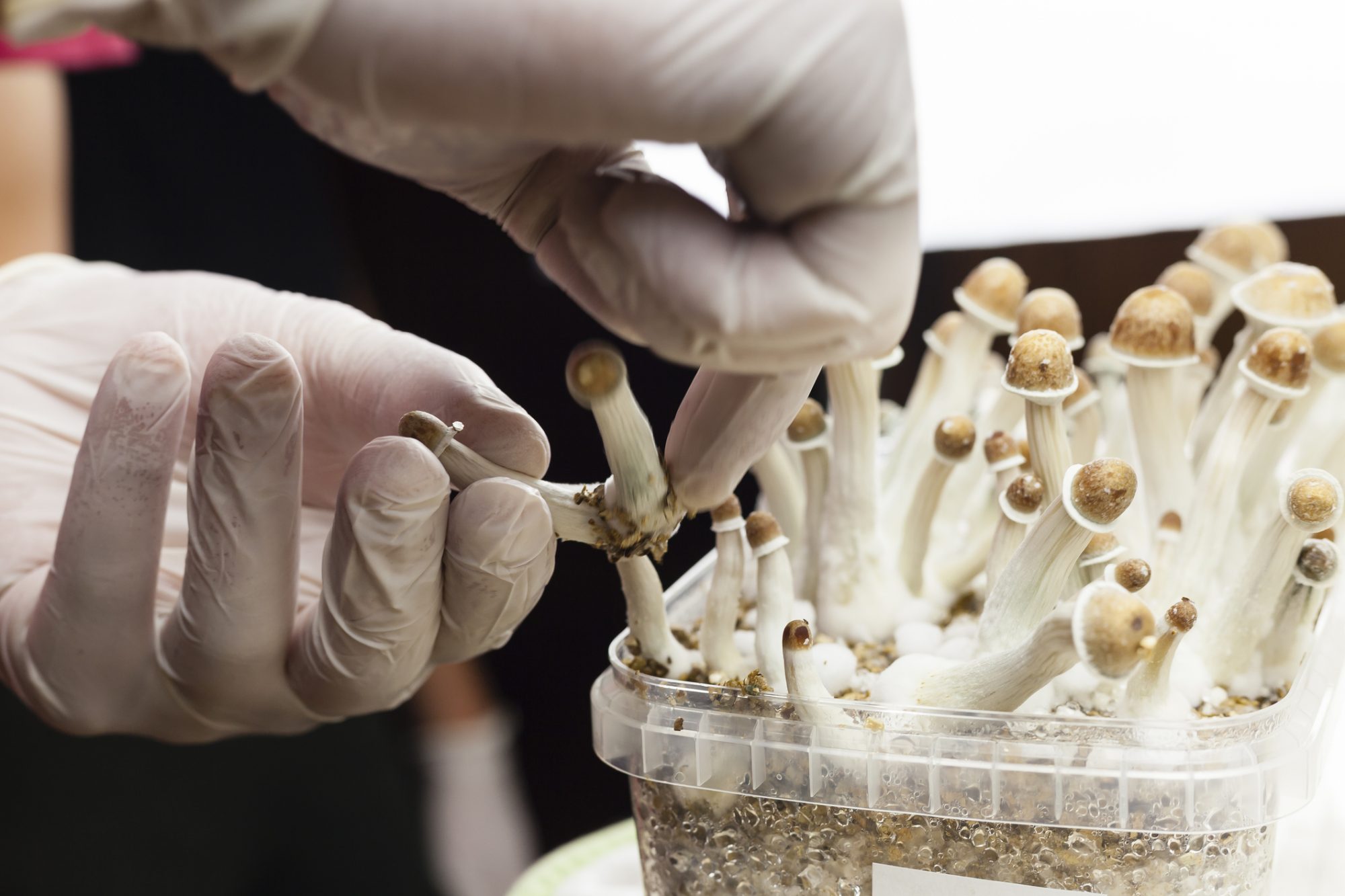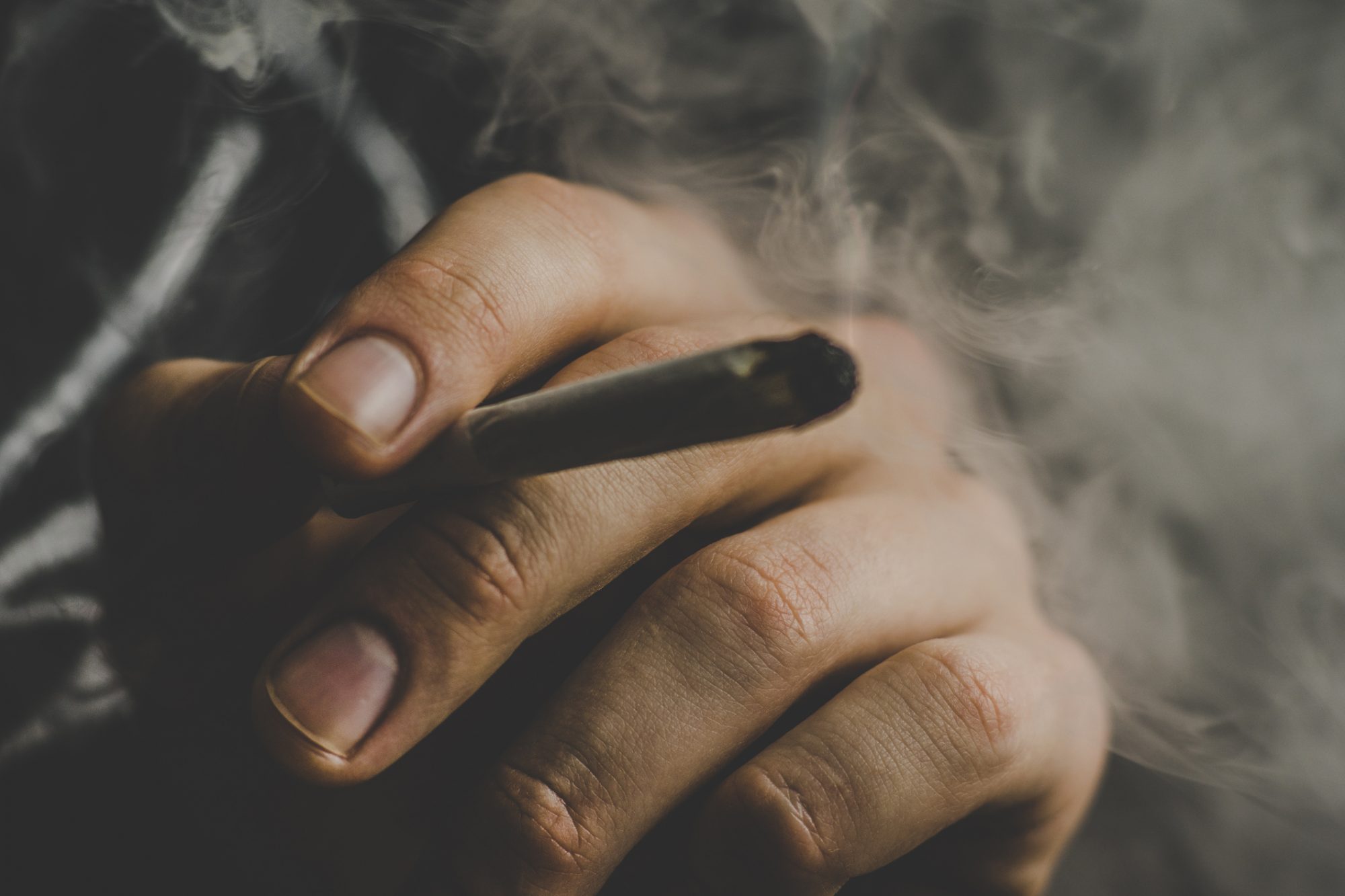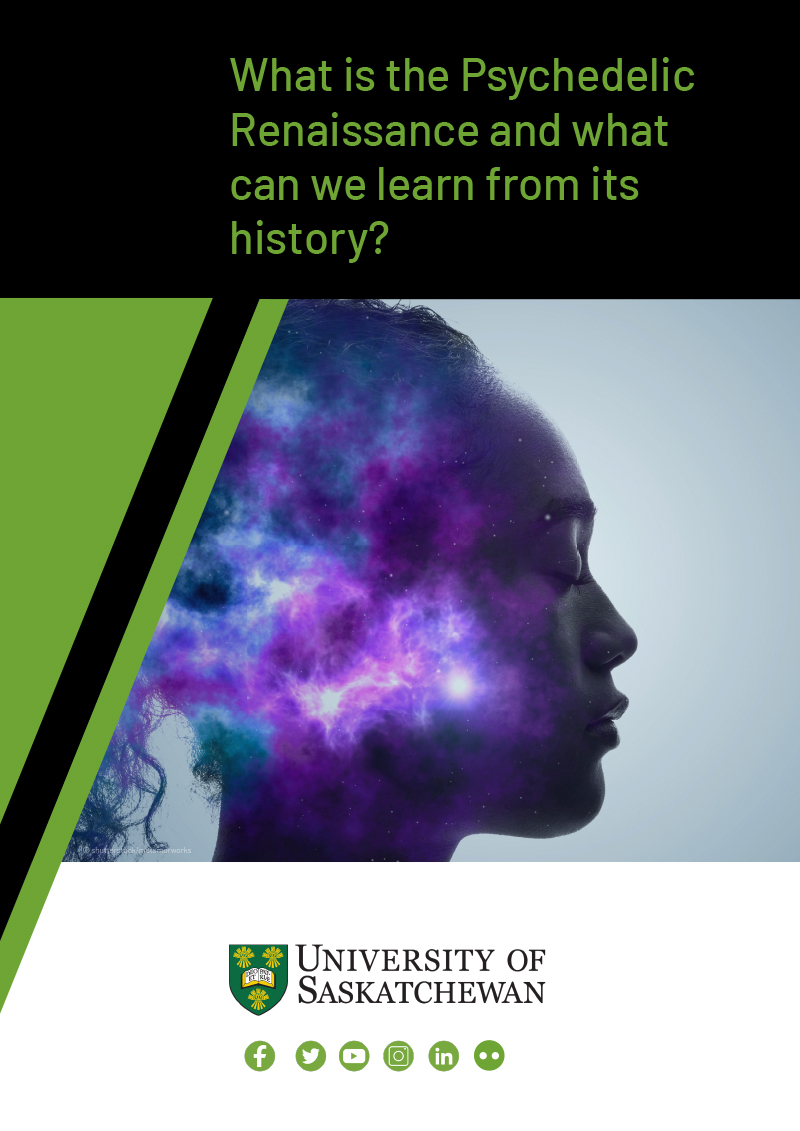Psychedelic therapies are breathing optimism back into modern psychiatry. Substances like psilocybin mushrooms, MDMA, and ketamine are showing clinical promise in a number of treatment-resistant categories of mental disorders, and we are beginning to see a psychedelic renaissance
The current fascination with these hallucinogenic drugs suggests that they are ideally suited to generate breakthroughs in clinical contexts, but historically these substances have not been confined to medicine.
If history is a reliable predictor of the future, it shows us that psychedelics fit into a much longer and more diverse legacy of experimentation and healing. Examples abound in Indigenous and non-western approaches to spirituality and an enduring curiosity about human consciousness and the role of nonordinary states in stimulating creativity.
Psychedelics have historically brought together three distinctive threads of inquiry. Some of the oldest approaches involve Indigenous uses of plants in an exploration and/or verification of a physical and spiritual relationship with nature. Over time, psychedelic ceremonies ritualized a set of practices for using Sacred plants to stimulate insights, cultivate healing, and later to process traumas perpetuated by colonial forces. But these plants were not only harvested for ceremonial or Indigenous uses.
Non-indigenous seekers have also sought out psychedelic experiences for their capacity to experience reality in new ways or to escape from conventional thinking. On the one hand we might think of philosophers, artists, and writers for whom psychedelics functioned as a creative muse, much like alcohol, hashish, or absinthe at one time attracted intellectuals in French salons.
But these intellectuals soon inspired more widespread recreational tastes that culminated in the rise of a countercultural phenomenon that combined psychedelics with non-conformist lifestyles, and according to some authorities, this movement involved widespread drug abuse.
Meanwhile, western medicine’s relationship with psychedelic drugs is comparatively short-lived. Medical applications of psychedelics have been concentrated into two time periods. The first wave of psychedelic psychiatry emerged in the 1950s and showed real potential for using psychedelics like LSD and mescaline to treat addictions and a growing list of mental disorders. The second wave is in full effect today.
Beginning in the 2010s, neuroscientists and psychiatrists have increasingly identified the therapeutic potential of psychedelics in clinical medicine, particularly in treatment-resistant problems like trauma, anxiety, and addictions. But, contrary to the other two approaches to using psychedelics, psychiatry has a longstanding tradition of working to minimize human variation by treating outlying human experiences as disorders. In contrast, psychedelics seem to stimulate alternative ways of thinking, feeling, and being.
The 21st-century public discussions on psychedelics emphasize their role in medicine, in some cases even celebrating medical applications while prohibiting other uses. Here, I urge us to consider the implications of privileging the medical approach over the others.
Indigenous and non-western antecedents to psychedelics
Archaeological evidence suggests that psychedelic plants have a long and global history. From the Iboga bush in Africa, the peyote cactus in northern Mexico, to Sacred psilocybin mushrooms in Central and Latin America, and the ayahuasca brew that combines different plants in the Amazon basin, plants that produce psychedelic effects have diverse roots.
Their uses are just as diverse and wide-ranging as their botany and chemistry, including for spiritual and healing ceremonies, transition periods in a person’s life, preparation for conflict or war, knowledgeseeking moments designated for particular people, and general well-being.
Anthropologists beginning in the 19th century recognized that for many of these experiences, the focal point was not the psychedelic substance itself, nor even on the visual projections or hallucinations caused after ingesting dried peyote, fresh psilocybin, or drinking ayahuasca tea. Ceremonial approaches tended to emphasize different features of the experience, including honouring and even personifying the wisdom embodied in plants to teach and heal. In some cases, these coveted plants were reserved for use by political elites or an experienced shaman to interpret the visions produced by plants.

The experiences did not typically hinge upon the psychedelics themselves, nor necessarily place them at the centre of the activity, but rather incorporated psychedelic plants as part of a larger ritual or approach that involved a range of features designed to elicit insights, that might also include fasting, smoking, dancing, singing, meditating, and resting. In these contexts, a psychedelic plant was merely part of a much more elaborate setting created with intention. Despite attempts by anthropologist observers and Indigenous leaders to underscore the significance of the cultural settings, the allure of psychedelics alone took centre stage in Western tastes.
The psychedelic renaissance: Hedonism, creativity, and recreational drug use
While it is tempting to blame American hippies for abusing psychedelics in the 1960s in a manner that triggered a backlash against their recreational use, the allure of using psychedelics in non-Indigenous contexts has a much longer history. Psychedelic gatherings have not only been events where people have sought healing, whether of minds or spirits but have also been significant venues for socializing and bonding. This idea is, of course, is part of a much longer tradition of engaging in forms of experiences that combine psychoactive substances with leisure.
Opium clubs, hashish bars, not to mention taverns and smoking clubs, have a long history of being embedded in many cultures as a feature of recreational and social pursuits. At times these spaces have been home to homosocial arrangements, like all men’s taverns or establishments divided along class lines, which might include working men’s clubs or opium dens in Southeast Asia, spaces which were accessible depending on one’s social standing, gender, ethnicity, sexuality, and class.
Hashish from the cannabis plant was enjoyed in parts of Northern Africa and the Middle East, in quantities and by smoking it to cause visions and creative expressions of art and writing. Of course, these states of consciousness were not appreciated by everyone but had a habit of attracting those attracted to society’s margins as well as artists of all sorts.
The Parisian salons of the 19th and early 20th centuries became hotspots for artists seeking nonordinary states of consciousness. Absinthe was a drink of choice for various artists, from Ernest Hemmingway to Pablo Picasso and Oscar Wilde. This drink combined herbs and had a reputation for its high alcohol content and psychoactive effect, which many believe made it a hallucinogenic drink.
Jurisdictions beginning with the US banned its consumption in 1915 as part of a larger prohibition effort, while bohemian artists reacted by forming underground absinthe clubs. Dreamers, artists, musicians, and writers alike have been drawn to altered states of consciousness. The reasons have varied, revealing different class, gender, and ethnic aspects related to access to hallucinogens or visionary experiences, but there was an alwaysgrowing list of thinkers and artists who used psychedelics as both a muse and perhaps a crutch.
Vincent Van Gogh’s taste for absinthe, for example, has been viewed by some as a tragic desire to selfmedicate, though we might wonder which influences had a tighter grip on his sense of reality, his madness or clinical depression, or was his impressionistic take on reality mediated through mind-altering substances? The comingling of madness and hallucinogens has a storied past that may say more about creativity than pathology.

Mind-altering drugs have been used, not necessarily to fix pathological problems, but to stimulate ideas and to inspire new ways of thinking about topics as wideranging as philosophy, medicine, and technology. The search for mind-altering experiences throughout history has often been explained in terms of seeking health benefits or cultivating spiritual insights, but the quest has also been one of pure curiosity. Alongside other noble pursuits, the desire to explore different states of consciousness, even to test the limits of the human mind by bending space and time, is an abiding and deep part of psychedelic history. For some consumers, the psychedelic experience has allowed them to think differently or avoid ruminating on rutted thought patterns.
This idea has been harnessed for therapeutic benefits, but it was also the very approach that led some people to achieve a eureka moment in their artistic or intellectual pursuit. Breakthrough moments in thinking have been attributed at times to psychedelic experiences that catalysed an idea or perhaps even planted it in the first place. This history is peppered with an assortment of figures who credit psychedelics with creating flashes of insight that inspired a major idea.
Understanding the history of psychedelic psychiatry
Drug-taking artists living bohemian lifestyles are one artery of this psychedelic past, but psychologists and psychiatrists seeking psychedelics had other designs on their use. In the mid-20th century, psychiatry was at a crossroads, and for a moment, psychedelic
therapies seemed poised to offer a solution. Patient populations swelled in neglected asylums, and psychiatrists were desperate to ameliorate the burden of mental illness.
Heavy-handed interventions like lobotomies and electro-convulsive therapies appeared harsh but earned their progenitors Nobel Prizes for the real and alleged relief they brought to sufferers. Chemical solutions, however, emerged on the horizon in the 1950s as a gentler, safer, and more sustainable solution.
A psychopharmacological revolution resulted, and psychedelics were swept up at this moment as psychiatrists searched for magic bullets. Researchers carefully coordinated psychedelic medicines with psychotherapy, some even claiming that a single session using this method was the equivalent of 10 years of therapy. With unprecedented success rates in treating several mental illnesses, psychedelics seemed to have found their place in the modern medical marketplace.
Early research with mescaline and later d-lysergic acid diethylamide-25 (LSD) convinced some experimenters that these powerfully psychoactive substances could provide insights into how people experienced madness. After World War II, the concept of a “model psychosis” guided some researchers to conclude that taking mescaline or LSD could produce a temporary psychotic state, a state that could be studied biochemically and experientially. Being able to model a major mental illness opened up new possibilities for treatment alongside ideas about the organic causes of psychosis and the potential insights that one can have in a psychotic state.
In one example of such radical research, Scottish psychiatrist R. D. Laing took this idea even further to suggest that psychosis might even represent a form of genius or a state that is better, more creative than sanity itself. The idea that one could temporarily and relatively safely alter one’s consciousness in order to experience this long-misunderstood human condition captured widespread attention.
The emergence of psychedelic science dovetailed with a period of medical experimentation and a reorganization of health care systems, including psychiatric care. Throughout much of the Western world by the 1960s, thousands of psychiatric patients moved out of long-stay institutions into community settings. Meanwhile, several jurisdictions outside of the United States introduced or expanded publicly funded health care options, making those health care systems particularly sensitive to cost-saving measures that might be found through medical experimentation and innovation.
For instance, if psychedelic therapies genuinely qualified as equivalent to 10 years of psychotherapy, as especially optimistic advocates sometimes claimed, jurisdictions engaged in developing publicly funded health care systems were more inclined to support this potentially cost-effective intervention.
But these were not the only financial considerations. As daily-use pharmaceuticals showed significant promise for their capacity to diminish unwanted psychiatric symptoms, hospital administrators and health departments alike favoured these non-invasive approaches to treatments that, at the outset, seemed capable of transforming health care.

If patients could now live fuller lives on medication that restored their ability to communicate and even to work and restore connections with family, then perhaps large custodial hospitals could become a feature of the past.
Psychopharmaceutical research grew exponentially during this period, and many jurisdictions engaged in a process referred to as “deinstitutionalization,” or the gradual and, in some cases, rather sudden closure of major mental hospitals as patients shifted from hospital stays to care in the community.
Psychedelic research was caught up in the revolutionary spirit of this dynamic moment within the history of psychiatry, but these psychoactive substances sat on the edges of orthodox clinical experimentation. For starters, psychedelic research did not always involve a typical subject-observer relationship.
The idea of a model psychosis relied upon researchers themselves consuming psychedelics. Some of the earliest medical explorations even took place at dinner parties, with friends and family, and in the comfort of doctors’ living rooms. These informal settings also allowed for a wider mix of people and experiences to fuel interest in these substances, creating interdisciplinary networks and intimate friendships.
By the 1950s, this informal, and even at times elitist, approach to studying psychedelic experiences increasingly stood at odds with the emerging methodology of the randomized controlled trial (RCT) that was becoming the standard measure for psychopharmaceutical treatments and which prioritized the objectivity of the observer aiming at diagnosable symptoms rather than a therapist enquiring into one’s experience with empathy.
Psychoactive drugs captured the attention of psychiatrists at the mid-century who were eager to find new tools for addressing psychiatric disorders. European pharmaceutical firms made LSD and mescaline available to researchers and therapists as pharmaceutical compounds slowly eclipsed other forms of physical intervention, including lobotomies, several convulsive therapies, and a range of techniques that manipulated the physical body to bring about mental relief.
Pharmaceutical remedies, most prominently with the first anti-psychotic drug chlorpromazine, appeared to relieve unwanted symptoms with fewer side effects when compared to non-pharmacological treatments, and moreover, patients could theoretically take pills at home rather than living out their lives in psychiatric hospitals or asylums.
Psychedelics nested into a paradigmatic shift in psychiatric medicine as it embraced pharmacological solutions more than ever before. Better living through chemistry, a variation on Dupont’s iconic marketing slogan from the 1930s, appealed across a number of fields and was broadly applied, such as to agricultural reforms aimed at solving the world’s population growth by guaranteeing higher crop yields.
This 20th-century chemical revolution necessitated new methods for measuring safety and understanding risk, whether in food production or in psychopharmacology. By the early 1960s, a number of key publications appeared that questioned what appeared to be abiding faith in chemistry as salvation to many of the global challenges of food supplies and growing rates of mental diseases. Concerns about pollution and the downstream costs of increased chemical inputs in agriculture raised alarms. Some of the promises associated with “better living through chemistry” did not all live up to the hype; chemicals, including pharmaceuticals, came under greater scrutiny, and new evaluation criteria came into effect.
One of the most significant changes for psychedelic researchers was the introduction of the RCT. This approach relied on minimizing the variables under observation, holding steady any external factors that might introduce bias either to the subject or the researcher. Techniques included “blinding,” which meant not revealing who received an active dose, and comparing, meaning the streaming of some subjects into an active stream while others received a placebo or non-active substance.
Double-blinded experiments incorporated these designs with the added feature of including the researchers themselves in the blinding, such that they, too, are unaware of which subjects received the active doses. These efforts to minimize bias allowed researchers to more precisely measure the effects of psychoactive substances, including a check to any undue enthusiasm or skepticism from either the subjects or the researchers.
Psychedelics did not perform well using this relatively new method. Researchers and subjects alike complained that true psychedelic effects were so profound that they became readily detectable, and some subjects felt frustrated upon realizing that they had received the placebo. But perhaps even more important than the trial design itself, psychedelic researchers quickly recognized that the context of the trial, the environment or setting, was an important part of the experience.
Already in the 1950s, serious psychedelic researchers had introduced protocols for setting up trial rooms with appropriate features, including comfortable chairs and furniture, music, windows, photographs, artwork, and, importantly, empathetic observers. Including these features ran counter to the methodology of the RCT, which aimed at an austere minimization of variables considered extraneous.
Indeed, the RCT seemed to sever psychedelics from the other historical contexts that had cultivated practices that combined the drug with other features, like an intentional setting.
What’s next for the psychedelic renaissance?
Today’s psychedelic renaissance revives some of these past features and to date, has been largely driven by biomedical influences over the other cultural and spiritual aspects. Assessing psychedelics in RCTs might generate safety profiles and move psychedelics into the medical marketplace, but the cultural and spiritual components do not fit as neatly into that evaluative structure.
Historical trends suggest that despite legal and scientific recommendations, psychedelics cannot be confined to this domain alone. It is less clear how to harness the momentum from these other approaches in order to promote psychedelic harm reduction. Yet it seems evident that psychedelics alone are not a magic bullet and will not fix a looming mental health crisis or work for everyone.
Confining psychedelics to a medical container, both in terms of research and regulation, may appear on the surface as an effective way to promote safe and limited use.
But medicalizing psychedelics may also introduce unnecessary risks. Looking beyond the clinical trials may permit a deeper appreciation of what motivates people to seek out psychedelic experiences in the first place. And working across disciplines and cultures might allow us to learn from non-medical traditions that have cultivated relationships with psychedelics with their own valid assessments of harms and risks.


